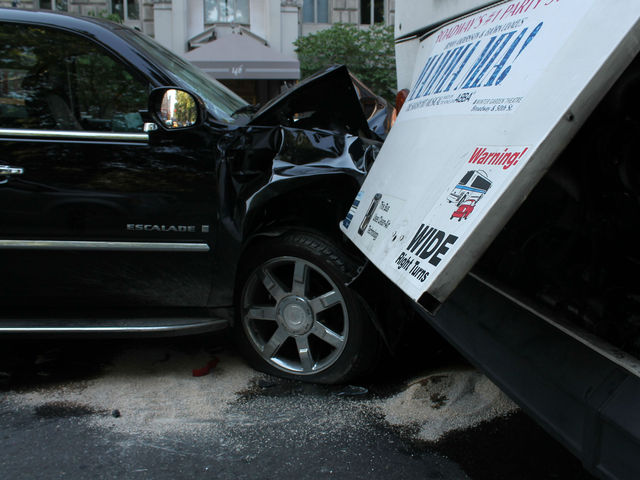Three stories linked from today's headline stack reveal an anti-pedestrian bias that city media types either don't recognize or have no interest in abandoning.

The Department of City Planning will this week unveil a preliminary proposal to upzone a large section of the East Side. When the Post set out to tear down one element of the plan, the conversion of Vanderbilt Avenue to a "pedestrian plaza" (scare quotes theirs), the reporters assigned to the job couldn't manage to file a quote from a single pedestrian.
Instead, to gauge the opinions of the street's "everyday users," the Post sought out a cab driver who -- brace yourselves -- complained that opening Vanderbilt to people would slow him down, and a food cart vendor, who provided a suspiciously ambiguous quote meant to imply that more pedestrian traffic would somehow be bad for his business. As far as the Post is concerned, the thousands of people who walk Vanderbilt Avenue every day do not exist.
Meanwhile, on Friday, two Manhattan traffic crashes injured at least eight people, including two pedestrians and an unknown number of bus passengers. Two pedestrians were hit by a curb-jumping driver in SoHo, while an SUV driver rear-ended an MTA bus on Central Park West. These crashes have a number of things in common. Both involved terrible driving, both resulted in injuries to innocent bystanders, and both were covered by DNAinfo. Another unifying element: neither of the private vehicle drivers involved in these crashes are mentioned by DNAinfo reporters.
It's as if each collision was the work of an autonomous vehicle -- which we can only assume was soon cleared of wrongdoing by NYPD and allowed to drive itself away (though the Escalade, having wedged itself into the rear of the M10, may have summoned its own tow truck).
Not to pick on DNAinfo here. Members of the New York City press corps routinely exhibit a selective blind spot when it comes to transportation reportage. When covering a change to the streetscape intended to benefit pedestrians, city reporters and editors turn to drivers first, and pedestrians become invisible. When covering a traffic crash that injures another street user, it's the motorists who disappear.





